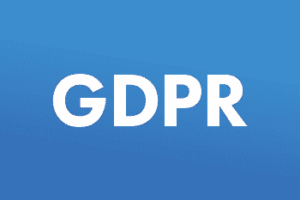We all have preconceived notions based on our life experiences, which can sometimes create a flawed sense of intuition. Such human bias can negatively impact our decisions, especially in professional settings such as a college admissions office or a job recruitment company.
Now, data scientists are looking to machine learning (ML) to help neutralize human bias in the workplace because ML offers data-driven insights on any topic without any inherent bias. Machine learning often goes hand in hand with Predictive Analytics (PA), which uses the insights that ML gathers to offer predictions. Due to the objective nature of these algorithms, Predictive Analytics and machine learning can go a long way toward neutralizing human bias in virtually every industry.
Removing Human Bias from Algorithms
The first step to using machine learning and Predictive Analytics to reduce human bias is to make sure the algorithm itself isn’t biased. After all, data scientists can unknowingly insert their own prejudices into the mix in what is known as algorithmic bias or predictive bias.
In order to eliminate the chances of algorithmic bias, follow these best practices:
- Don’t borrow from old software, code and algorithms: While it may be tempting to use pieces of software that were used in other solutions, they may be riddled with biases that will create an impartial product that produces poor quality results.
- Be aware of personal biases: Data scientists need to be aware of their own prejudices and make an active effort to maintain an open mind. They should look at the algorithm development process from a fresh pair of eyes, not allowing previous experiences to influence their decisions.
- Include a variety of data sources: Drawing from many sources allows each dataset to carry the same amount of weight, ensuring that one set of data isn’t tipping the scales too much. Collect as many data points as possible and find the common threads across datasets.
- Utilize black box testing: Black box testing requires software testers to dig deep into a machine learning or Predictive Analytics model to understand how it unearths insights or makes predictions. This form of testing looks for gaps or flaws in functions, errors with the software’s interface, behavior or performance errors, data structure errors, external database access issues, and initialization/termination errors.
By following these guidelines, developers can feel confident that the algorithm itself will present accurate, objective results.
Applications for Predictive Analytics and Machine Learning to Reduce Human Bias
So, what situations would benefit from the use of machine learning and Predictive Analytics to increase objectivity? Well, the applications are virtually limitless, but here are a few specific ways these technologies could make the world a better place.
Everyone needs healthcare, but unfortunately, biases (whether intentional or unintentional) can sometimes lead to certain patients not getting the treatment they deserve. After all, a hospital that only accepts patients who have a certain degree of wealth is doing a disservice to the healthcare industry as a whole by promoting classism. A hospital can reduce such bias by using machine learning algorithms that decide whether a patient is eligible for surgery based on the urgency of their symptoms rather than their economic status.
Alternatively, consider the academic world. In a college admissions office, ML and PA could neutralize human bias that may hurt the chances of applicants who may not be straight-A students but still have a lot to offer in other ways. While grades and athletics are still considered king by admissions offices, this may overlook the value of applicants with artistic talents. A points-based admission software that ranks students based on a variety of factors may shift the way it values students and become more accepting of different talents. In this instance, machine learning can learn more about how data is structured within the application’s algorithm. Then, software testers can adjust the algorithm to reduce any inherent bias.
With the help of machine learning and Predictive Analytics, businesses in all industries can work to give everyone an equal opportunity. By reducing the effects of prejudice, companies will both improve the effectiveness of their work processes and increase parity for their clients.
Machine Learning and Human Bias: Making a Better World
Machine learning and Predictive Analytics have the potential to create a more objective world that treats people from all walks of life fairly. Almost every industry can benefit from what the technology has to offer, and now data scientists are developing sophisticated business solutions that create a more level playing field.
At 7T, we believe that cutting-edge technology can change the world. We offer machine learning and Predictive Analytics services to help companies looking to neutralize human bias in their decision-making processes. In addition, our development team is well-versed in other emerging technologies such as augmented reality, virtual reality, blockchain and natural language processing.
Although our headquarters are in Dallas, 7T also serves clients in Austin, Houston, and beyond. If you’re ready to discuss your project, we hope that you will contact us today.









